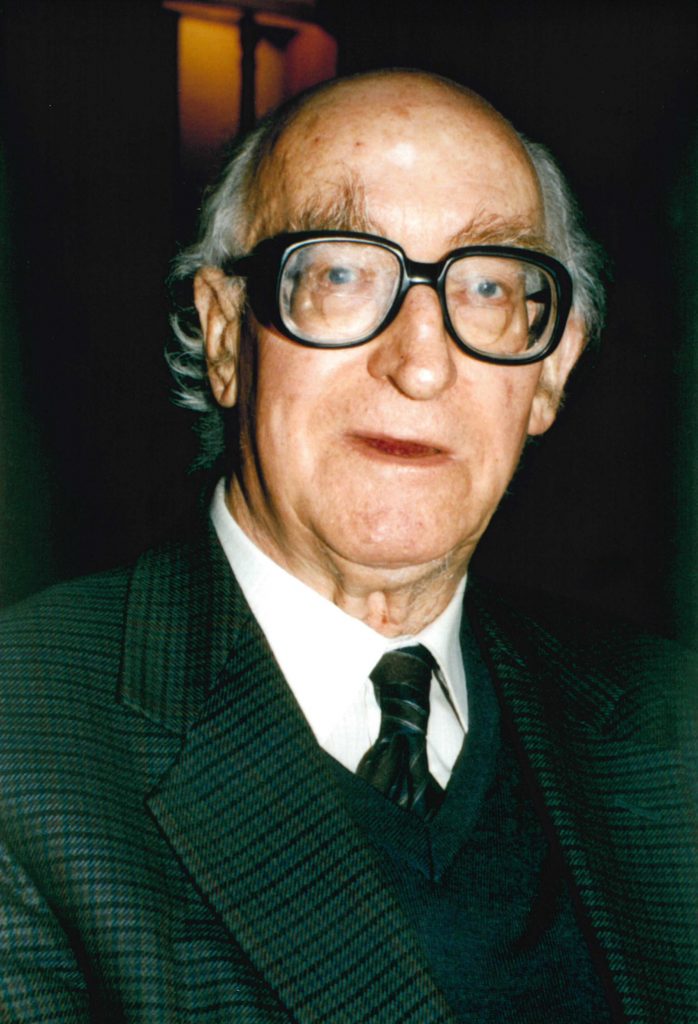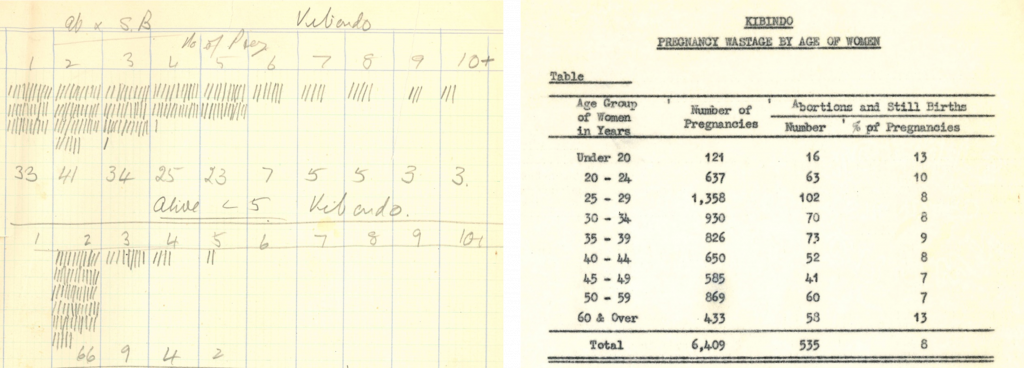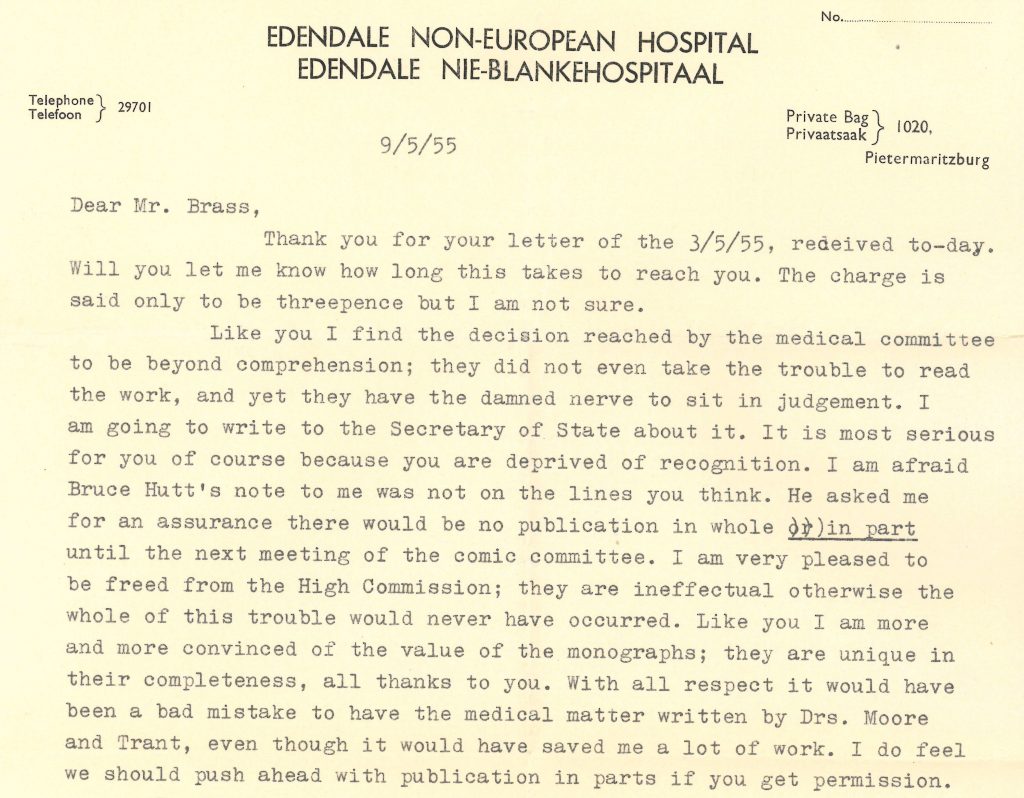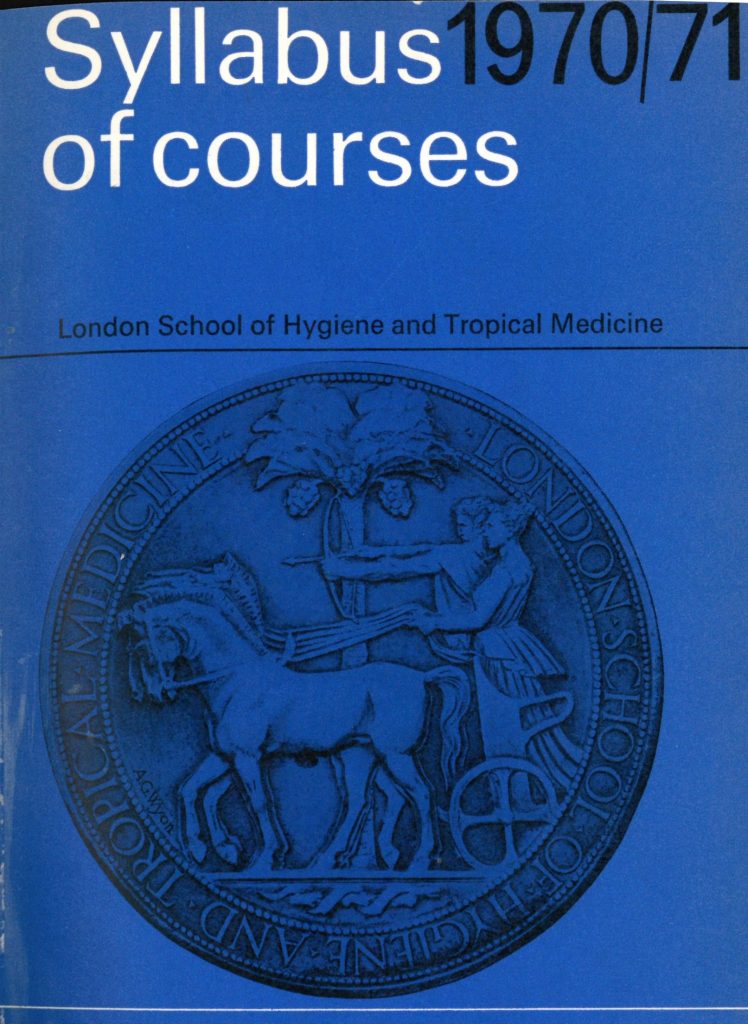The LSHTM Archive recently catalogued and made available to researchers the papers of William Brass (1921 – 1999).

William Brass was a demographer, meaning that he undertook statistical research of human populations. Throughout his career he developed indirect methods for estimating mortality and fertility in populations lacking comprehensive registrations of births and deaths.
For example, researchers could obtain estimates of infant and child mortality in different regions by asking mothers about the number of children they have ever had and the number still alive.
In 1948, Brass began working as a statistician, then as deputy director, for the East African Statistical Department. During the time that he worked there, the department conducted the first comprehensive census in East Africa. Brass also designed and analysed the East African Medical Survey.
East African Medical Survey
There is a long history of medical research and intervention in East Africa. Since the arrival of Europeans in the region in the mid-19th century, East Africans have experienced exposure to Western medicine and research practices. During the colonial-era and beyond, researchers used East Africans as a source of data. Large numbers of East Africans participated in different varieties of medical research. This often resulted in the blending of medical treatment with medical research. Research practices during this time reflected the tendency of European researchers to think of African’s as data rather than patients.

The East African Medical Survey took place during the peak of colonial medical research in East Africa. It was just one of various projects overseen by the East African High Commission, an international organisation which existed with the intention of providing common services to the British-administered Uganda, Kenya and Tanganyika (now part of Tanzania).


The intention of the Survey was to obtain exact information on the state of health of selected populations. Following this, experiments would be carried out to “ascertain the best methods of controlling the more important diseases”. The first Director of the Survey was William Laurie. He held the belief that the Survey’s finances should primarily prioritize research rather than assuming responsibility for the treatment of participants.
The majority of the Brass archive collection focuses on his research for the East African Medical Survey, conducted during the 1950s. His research mainly focused in Tanzania, analysing data collected from Ukara, Bukoba, Buha, Kasulu, Mbweni, Kibondo, Kwimba and Kusini. Medical Officers in communities undertook general examinations, laboratory examinations, physical examinations, and collected maternity and reproductive history data. Researchers like Brass then analysed the collected data.


As well as collecting data, examinations also included the taking of samples from participants. The 1952 East African Medical Survey annual report notes that over a period of six months, Medical Officers took 19,468 blood, urine, and stool samples.
European research staff relied heavily on help from local authorities within communities when recruiting participants. In a 1953 update, it was noted that despite the specification that participants in the Survey should be amenable, the influx of a large field team into Ukara had a “most upsetting effect on the native” and was not a “welcome event”. The Medical Officers’ random sampling approach faced “a lack of co-operation and attempted evasions”.
Throughout the Survey, recruitment of staff proved a major difficulty. By the end of 1953, a shortage of statistical staff and equipment meant that data began to accumulate at a faster rate than it could be handled. In 1955, researchers had still not been able to create an adequate base of scientific data. Despite a massive collection of medical forms and samples being collected, the Survey had not yielded any new conclusions with which to inform health policymaking in East Africa.

After the Survey
Following the conclusion of the East African Medical Survey Brass became a lecturer in statistics at the University of Aberdeen. Research in East Africa slowed significantly during the 1960s. As colonisation ended, the work of colonial research institutes faced disruptions. Tanganyika (now part of Tanzania) gained independence in 1961, Uganda in 1962, and Kenya in 1963.
Brass went on to work at the London School of Hygiene and Tropical Medicine as a Reader in Medical Demography and then a Professor from 1965 until his retirement in 1988. As the School’s first demographer, he created a master’s course in medical demography in 1970. He also established the Centre for Population Studies in 1972.

During the 1990s, Brass chaired the Working Group on Kenya for the Committee on Population. The Committee was now able to rely on existing data sets. This included several major demographic surveys conducted in Kenya between 1977-1989, as well as decennial censuses from 1969 onwards. By this time there was also an increasing advocation from organisations such as the African Population Advisory Committee that Africans should take leadership positions in solving problems relating to population and family planning. The Committee also promoted the view that attaining genuine community involvement was pivotal to improving population programme implementation.
You can explore the Brass collection here.